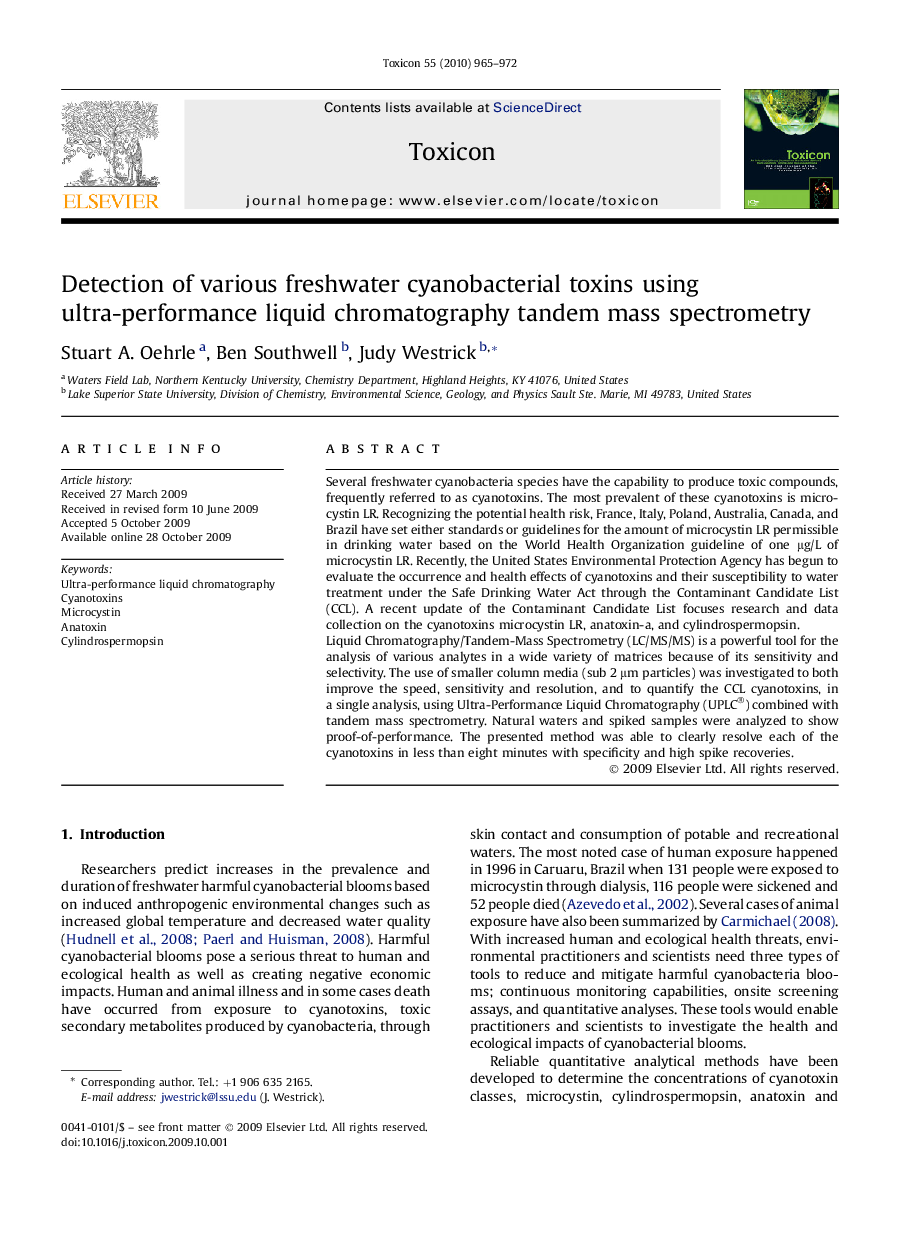| Article ID | Journal | Published Year | Pages | File Type |
|---|---|---|---|---|
| 2066402 | Toxicon | 2010 | 8 Pages |
Several freshwater cyanobacteria species have the capability to produce toxic compounds, frequently referred to as cyanotoxins. The most prevalent of these cyanotoxins is microcystin LR. Recognizing the potential health risk, France, Italy, Poland, Australia, Canada, and Brazil have set either standards or guidelines for the amount of microcystin LR permissible in drinking water based on the World Health Organization guideline of one μg/L of microcystin LR. Recently, the United States Environmental Protection Agency has begun to evaluate the occurrence and health effects of cyanotoxins and their susceptibility to water treatment under the Safe Drinking Water Act through the Contaminant Candidate List (CCL). A recent update of the Contaminant Candidate List focuses research and data collection on the cyanotoxins microcystin LR, anatoxin-a, and cylindrospermopsin.Liquid Chromatography/Tandem-Mass Spectrometry (LC/MS/MS) is a powerful tool for the analysis of various analytes in a wide variety of matrices because of its sensitivity and selectivity. The use of smaller column media (sub 2 μm particles) was investigated to both improve the speed, sensitivity and resolution, and to quantify the CCL cyanotoxins, in a single analysis, using Ultra-Performance Liquid Chromatography (UPLC®) combined with tandem mass spectrometry. Natural waters and spiked samples were analyzed to show proof-of-performance. The presented method was able to clearly resolve each of the cyanotoxins in less than eight minutes with specificity and high spike recoveries.
